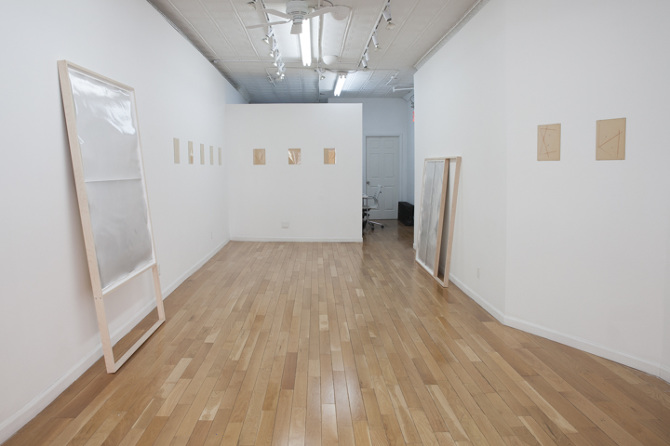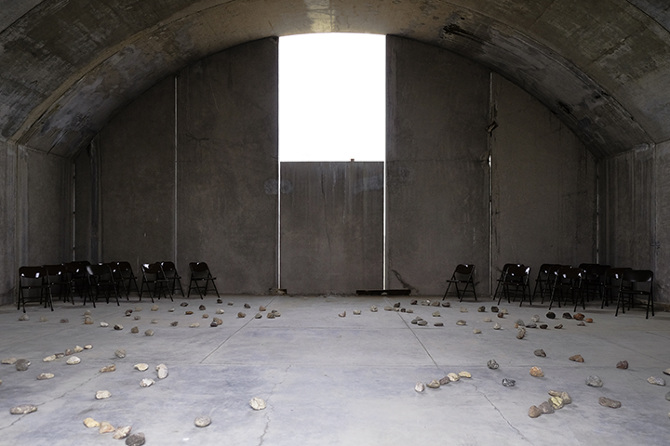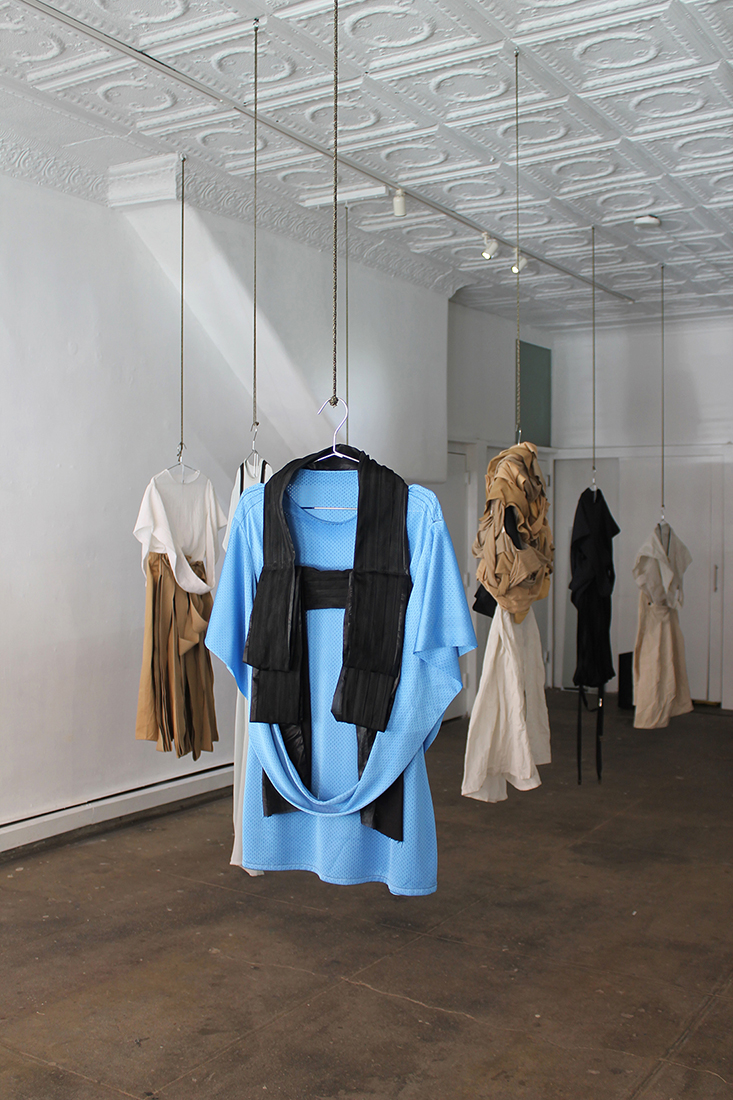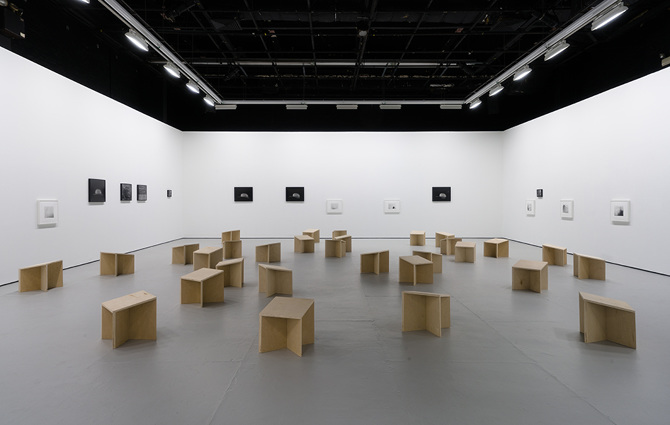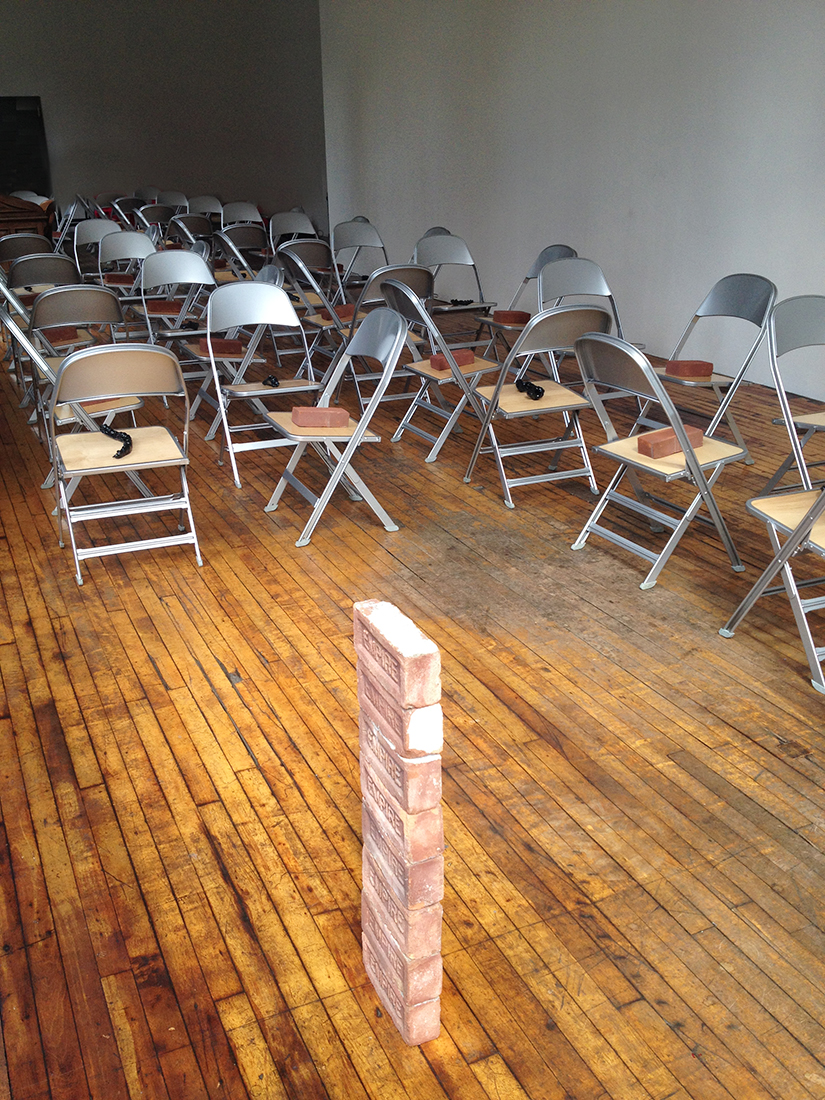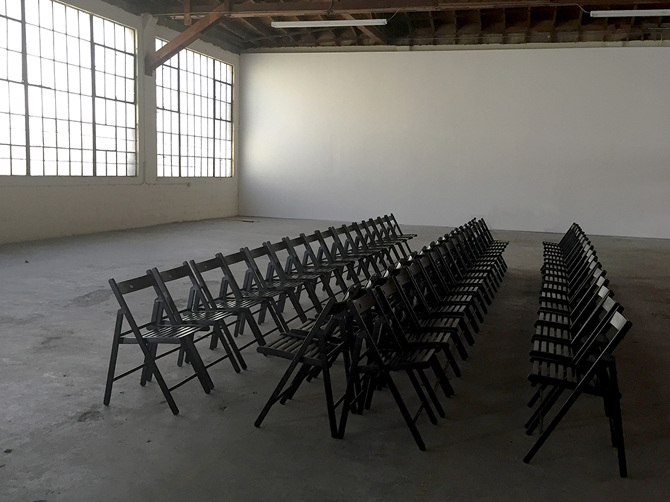Katherine Hubbard: Stages & Others
Fields of vision are taken for granted both in eyes and cameras. Space occupies. Voluptuous volume. Pungent periphery. Lively space between heads and ceilings; all too often invisible. Stages of lively performance are broad and commiserate on cockled calculates. Quick, nearly enough to be fleeting, the world dissolves. Interactions are not without reflection or capture. Katherine Hubbard is of wonder in regard to the structure and execution of such photographic implications. What’s implied by the space of photographic capture? Community and body. Bound and public. The activation of Hubbard is engagement. Movement cast in stillness. This great dichotomy of photography is complicated by exploration of terms of engagement and contexts. Being outside of things is as valuable as being inside.
Standing far away from the medium of photography lands you within. Situations are most important and avoiding feelings that are judgments expounds complications that are confident enough to hold. Recognizing intricacies of how to pictorialize and express photography scratches new surfaces. Viewership becomes communicative; relationships between others expound medium and turmoil. The values of the body are interwoven into the camera and there are all sorts of ways to shift responsibilities. Hubbard is a conductor. She is looking to express what gets left out by the camera. The expounding expanse of vision is measured with values, but only if you accept the invisible. Mediating individual attitudes and recognizing position can change objects, and windows, and meanings, and reasoning.
The camera deals with ‘bodyliness.’ Hubbard shuts down sensory. Distractions are terms of the body. You are a given, that viewership is skeptical. There is no passive watching, although falling asleep is ok too. Being a participant of you is the work. People do the work and there are no incorrect responses. The tangible objects of Hubbard act as catalyst. Results may vary—being present is necessary. Terms of the medium point to what’s next. Extending the ground and image plane cheat the stages and constructions. Dimensional physicality and space become more than forgotten emptiness. What steps out into yonder is a performance into environment. The body and the camera become the same. There is a traceability that comes back to the world.
We are subject to ourselves. Not permanent, but highly susceptible. The tool of photography is not of issue; there are problems in use. Hubbard recognizes fast relationships toward images. Her work inaugurates internal receptions of the camera and photography. Why do we see what we think we see? Question perception. What are you a part of? Acknowledge participation. Finding is fueled by emptying the frame. All becomes precise. Parts are allowed into the concept and imagery of photography. People orient—‘bodiness’ is shared. Thinking is circular.
Be sure to catch Katherine Hubbard’s solo show up now at Baxter Street Camera Club of New York. To see more of her work click here.
